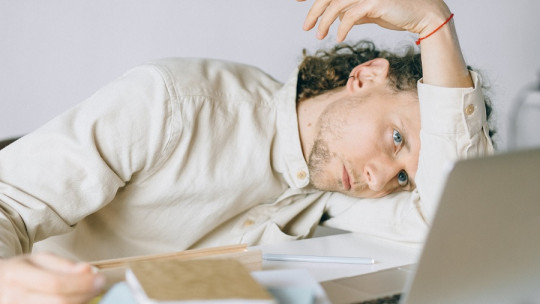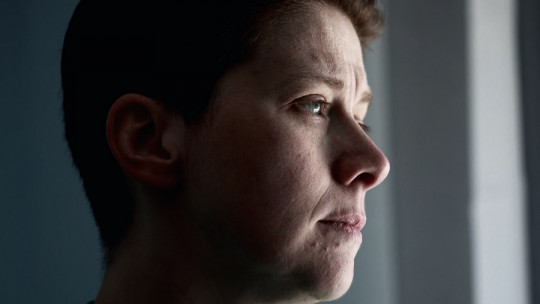What is anxiety? It is a natural response of the body to situations of stress or danger, but in some people this response becomes exaggerated and can interfere with their daily life.
If you are experiencing anxiety frequently, here are some strategies that can help you.
What to do if you suffer from anxiety?
Follow these General guidelines and recommendations to know how to deal with anxiety problems.
1. Identify your anxiety triggers
Think about the situations or thoughts that usually trigger your anxiety. It can be public speaking, being in places with many people or facing a situation. Ask yourself:
If you answer yes to all or half of these questions, pay attention and start taking steps to manage your anxiety. If you’re having trouble doing this on your own, consider talking to a mental health professional.
2. Practice relaxation
Find moments of tranquility and peace in your day to relax. This can be listening to music, practicing yoga or mindfulness, breathing deeply, or taking a hot bath.
2.1. Mindfulness Practice: Full attention
Mindfulness is based on full attention, it consists of paying attention intentionally and nonjudgmentally to present experiences , such as physical sensations, thoughts and emotions. The goal of mindfulness is to learn to live in the present moment, without getting carried away by thoughts and worries about the past or the future. This is practiced through meditation, but can also be integrated into everyday activities such as walking, eating, cooking or even working. The idea is to be present and aware of the sensations and thoughts during these activities.
Exercise of the five senses : You just need to be aware of your five senses and focus on each one separately. To do it you have to follow the following order:
2.2. Progressive relaxation
It is a relaxation technique used to reduce anxiety, stress and muscle tension. It was developed in the 1920s by psychiatrist and physiologist Edmund Jacobson. It is based on the idea that muscle tension and anxiety are related.
The exercise is performed with the room in darkness and eyes closed. Pleasant music and a little flavoring (essential oils or incense), if possible, to promote your relaxation. Take three deep breaths, eliminate tension from your body and relax it from head to toe.
The technique consists of progressively tensing and relaxing the muscles throughout the body, starting with the feet and toes for a few seconds. Then, relax them completely for a few seconds. Continue moving through the body, tensing and relaxing the muscles in the legs, buttocks, abdomen, chest, shoulders, arms, hands, neck and head.
2.2. positive imagination
It consists of imagining a positive and pleasant situation or scenario, and focus on the details of the experience to create a feeling of well-being and calm.
Exercise: Imagine you are on a beautiful beach with crystal clear waters, a gentle breeze and the sun warming your skin. Try to visualize the beach in detail, including the soft sand and the sound of the waves. Start imagining that you are walking, feeling the soft sand under your feet and the breeze on your face. As you walk you can observe the palm trees, the animals that live there and their sound.
Find a place on the beach where you can sit or lie down comfortably, now start imagining a positive object or situation, it can be something you want in your life, a dream you have, a happy memory or simply a pleasant experience in the greatest detail possible. Pay attention to all your senses: how it looks, how it feels, how it smells, how it sounds, etc.
Feel the happiness, joy and peace it brings you. Take a few minutes to enjoy this experience, breathing deeply and allowing the positive feelings to fill you. When you feel ready, open your eyes and return to the present.
2. Exercise regularly
Physical exercise is an excellent way to reduce anxiety levels, since helps release endorphins in the body.
3. Maintain a healthy diet
The foods you eat can affect your mood and anxiety levels. Try to consume a balanced diet, reduce caffeine and alcohol consumption, which increase anxiety.
4. Seek social support
Talk to friends, family, or a mental health professional about your feelings and concerns.
5. Practice acceptance
Learn to accept that anxiety is a normal response of the body and do not avoid it. Instead, focus on managing your emotions and thoughts in a healthy way.
6. Identify your negative thoughts
Try to change those thoughts to more positive and realistic ones.
7. Cognitive restructuring exercise
It is a technique that focuses on identifying negative thoughts, questioning their veracity and usefulness, and then replacing them with more realistic and positive thoughts.
Let’s look at an example of cognitive restructuring going through three filters of evidence, severity and usefulness of thought.
Negative thought: “I will never find a job. “I’m a total failure.”
8. Prioritize sleep
Getting enough sleep is important to maintain a balanced mood and reduce anxiety. Aim for 7 to 8 hours of sleep per night and establish a regular sleep routine.









